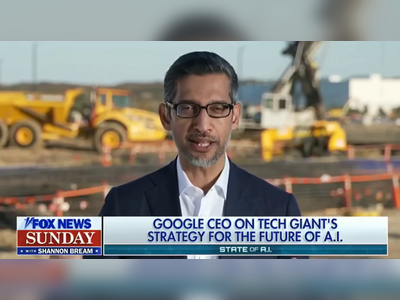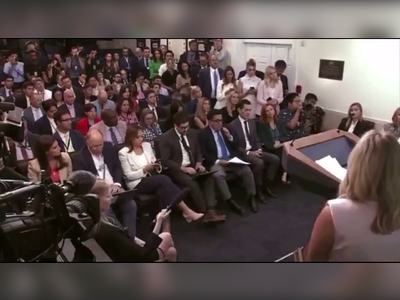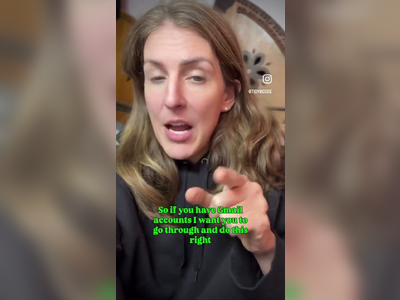Meta Shifts Content Moderation Strategy: Context Notes to Replace Fact-Checking in the U.S.
In a significant policy update, Meta embraces a user-driven moderation model akin to X, aiming to enhance transparency and community involvement.
Meta, the tech giant behind Facebook, WhatsApp, and Instagram, announced a transformative change in its approach to content moderation in the United States.
The company will discontinue its existing digital verification program, replacing it with a system of community-managed 'context notes,' mirroring a methodology implemented by X, the platform previously known as Twitter.
This shift was disclosed on Tuesday in Paris, reflecting Meta's attempt to refine its strategy in handling potentially misleading content.
Understanding Context Notes
Context notes serve as a collective content moderation tool.
When content on the platform appears potentially misleading, context notes are appended beneath such posts.
The system, initially rolled out by Twitter in 2021 under Elon Musk's leadership, allows users to propose and draft these notes.
Volunteers who have registered for the program contribute to these notes, which remain free from editorial influence by Meta's teams.
Lionel Kaplan, president of Dicenda, a content creation agency specializing in social media, explains that "other users then evaluate whether a note is beneficial based on criteria such as the relevance of sources and the clarity of the information." If a note garners enough positive evaluations, it is displayed beneath the post to provide additional context.
Such assessments consider not only the volume of users who rate the notes as useful or not but also whether the reviewers exhibit diverse backgrounds, consistent with X's stated principles on their website.
The operational philosophy resembles that of Wikipedia, relying on an active user community to elevate content quality, Kaplan added.
Meta considers this approach to be "less biased" than traditional fact-checking methods.
Challenges and Risks
Currently, Meta runs a fact-checking program in more than 26 languages, partnering with over 80 media organizations worldwide.
This effort remunerates fact-checks to enhance reliability on its platforms, including WhatsApp and Instagram.
Christine Balagué, a professor at the Institut Mines-Télécom and founder of the Good in Tech research network, which studies misinformation, cautions that relying on crowd-sourced verification can be problematic.
"While the collective may reach the right conclusions, there remains a risk of malicious intent aimed at disseminating falsehoods," she warns.
Angie Drobnic Holan, a prominent figure in the International Fact-Checking Network (IFCN), pointed out that this decision could negatively impact users seeking precise and reliable information.
Concerns were also raised about political pressures influencing such strategic changes, notably in light of President-elect Donald Trump's upcoming inauguration.
Bill Adair, IFCN's co-founder, criticized Meta's CEO, Mark Zuckerberg, for echoing political attacks against fact-checkers, even though participating fact-checkers commit to transparency and impartiality.
Evaluating Effectiveness
Research indicates that context notes can reduce the spread of misinformation by approximately 20% on the X platform, as noted by Balagué.
Despite this system not being entirely foolproof, Kaplan supports the efficacy of context notes, suggesting they can manage larger volumes of information than traditional fact-checking.
Though hailed for fostering a democratic approach that encourages diverse viewpoints, the system's critics argue that under Musk's stewardship, X has been accused of enabling misinformation proliferation, attributed to a reduction in moderation teams and an environment potentially fostering radicalism.
Meta has revealed that users can begin registering to contribute to context notes starting Monday, although specific criteria for participation remain undisclosed.
The implementation of this new moderation framework marks a pivotal moment in Meta's handling of digital content, drawing both interest and apprehension from stakeholders across the social media landscape.
The company will discontinue its existing digital verification program, replacing it with a system of community-managed 'context notes,' mirroring a methodology implemented by X, the platform previously known as Twitter.
This shift was disclosed on Tuesday in Paris, reflecting Meta's attempt to refine its strategy in handling potentially misleading content.
Understanding Context Notes
Context notes serve as a collective content moderation tool.
When content on the platform appears potentially misleading, context notes are appended beneath such posts.
The system, initially rolled out by Twitter in 2021 under Elon Musk's leadership, allows users to propose and draft these notes.
Volunteers who have registered for the program contribute to these notes, which remain free from editorial influence by Meta's teams.
Lionel Kaplan, president of Dicenda, a content creation agency specializing in social media, explains that "other users then evaluate whether a note is beneficial based on criteria such as the relevance of sources and the clarity of the information." If a note garners enough positive evaluations, it is displayed beneath the post to provide additional context.
Such assessments consider not only the volume of users who rate the notes as useful or not but also whether the reviewers exhibit diverse backgrounds, consistent with X's stated principles on their website.
The operational philosophy resembles that of Wikipedia, relying on an active user community to elevate content quality, Kaplan added.
Meta considers this approach to be "less biased" than traditional fact-checking methods.
Challenges and Risks
Currently, Meta runs a fact-checking program in more than 26 languages, partnering with over 80 media organizations worldwide.
This effort remunerates fact-checks to enhance reliability on its platforms, including WhatsApp and Instagram.
Christine Balagué, a professor at the Institut Mines-Télécom and founder of the Good in Tech research network, which studies misinformation, cautions that relying on crowd-sourced verification can be problematic.
"While the collective may reach the right conclusions, there remains a risk of malicious intent aimed at disseminating falsehoods," she warns.
Angie Drobnic Holan, a prominent figure in the International Fact-Checking Network (IFCN), pointed out that this decision could negatively impact users seeking precise and reliable information.
Concerns were also raised about political pressures influencing such strategic changes, notably in light of President-elect Donald Trump's upcoming inauguration.
Bill Adair, IFCN's co-founder, criticized Meta's CEO, Mark Zuckerberg, for echoing political attacks against fact-checkers, even though participating fact-checkers commit to transparency and impartiality.
Evaluating Effectiveness
Research indicates that context notes can reduce the spread of misinformation by approximately 20% on the X platform, as noted by Balagué.
Despite this system not being entirely foolproof, Kaplan supports the efficacy of context notes, suggesting they can manage larger volumes of information than traditional fact-checking.
Though hailed for fostering a democratic approach that encourages diverse viewpoints, the system's critics argue that under Musk's stewardship, X has been accused of enabling misinformation proliferation, attributed to a reduction in moderation teams and an environment potentially fostering radicalism.
Meta has revealed that users can begin registering to contribute to context notes starting Monday, although specific criteria for participation remain undisclosed.
The implementation of this new moderation framework marks a pivotal moment in Meta's handling of digital content, drawing both interest and apprehension from stakeholders across the social media landscape.








